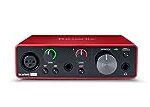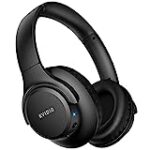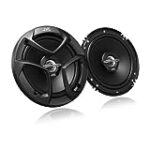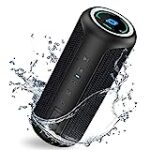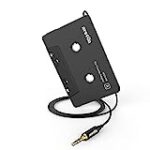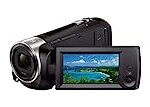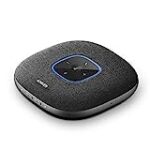🌅 Introduction
Welcome to our comprehensive condenser microphones buying guide! If you’re in the market for a top-notch condenser microphone, you’ve come to the right place. Whether you’re a professional musician, podcaster, or content creator, finding the perfect condenser microphone can make a world of difference in the quality of your recordings. In this guide, we’ll explore the key factors to consider when purchasing a condenser microphone, including sound quality, sensitivity, polar patterns, and budget-friendly options. Get ready to take your audio recordings to the next level with our expert advice and recommendations.
🏆 Our Top 5
- Large-diaphragm cardioid condenser microphone ideal for music production, vocal recording, streaming and podcasting
- HF6 1-inch true condenser capsule with a smooth frequency response, high sensitivity and extremely high SPL handling
- Exceptionally low noise (4dBA) – the world’s quietest studio condenser microphone
- Studio-grade shock mount, pop filter and premium XLR cable included
- Built to the highest standard from premium components in RØDE’s precision facilities in Sydney, Australia and backed by a 10-year warranty
- The price/performance standard in side address studio condenser microphone technology
- Ideal for project/home studio applications; The noise level is 20 dB SPL
- High SPL handling and wide dynamic range provide unmatched versatility
- Custom engineered low mass diaphragm provides extended frequency response and superior transient response
- Cardioid polar pattern reduces pickup of sounds from the sides and rear, improving isolation of desired sound source. Output connector: integral 3 pin XLRM type
- Custom three-capsule array: This professional USB mic produces clear, powerful, broadcast-quality sound for YouTube videos, Twitch game streaming, podcasting, Zoom meetings, music recording and more
- Blue VOICE software: Elevate your streamings and recordings with clear broadcast vocal sound and entertain your audience with enhanced effects, advanced modulation and HD audio samples
- Four pickup patterns: Flexible cardioid, omni, bidirectional, and stereo pickup patterns allow you to record in ways that would normally require multiple mics, for vocals, instruments and podcasts
- Onboard audio controls: Headphone volume, pattern selection, instant mute, and mic gain put you in charge of every level of the audio recording and streaming process
- Positionable design: Pivot the mic in relation to the sound source to optimize your sound quality thanks to the adjustable desktop stand and track your voice in real time with no-latency monitoring
- Groundbreaking studio condenser microphone that fuses the classic sound signature of the iconic NT1 with patented next-generation technology
- Connect to an audio interface or mixer via XLR, or plug directly into a computer via USB to record studio-grade sound in any setup – an all-in-one digital recording solution for the home or the studio
- Offers the classic warm, silky character, extremely low self-noise and high SPL handling capability that the original is revered for, perfect for a huge range of applications, from voiceovers and guitars to drums and piano
- Features RØDE’s ultra-low-noise, high-gain Revolution Preamp and high-resolution (up to 192kHz) analog-to-digital conversion for crystal-clear digital recordings
- Body machined from high-grade aluminium with nickel plating and military-grade ceramic coating, ensuring its ready to take on the rigours of recording day in, day out
- Studio-grade condenser microphone that delivers premium audio performance for crystal clear audio capture - perfect for vocals, acoustic instruments, amplifiers and more
- Directional cardioid polar pattern and pure-aluminum-plated, 18mm-diameter-diaphragm condenser capsule
- Smooth, wide ranging frequency response (20–20,000Hz) captures the full audible spectrum
- High sensitivity and low signal-to-noise ratio captures every subtle nuance of your source audio
- Compact footprint and lightweight form factor for portable audio capture
🤔 How to choose?
1. Sound Quality
When choosing a condenser microphone, the most important factor to consider is the sound quality it produces. A high-quality condenser microphone will capture audio with exceptional clarity and detail, making it ideal for professional recording applications. Look for a microphone that offers a wide frequency response range and low self-noise.
2. Polar Pattern
The polar pattern of a condenser microphone determines how it picks up sound from different directions. The most common polar patterns are cardioid, omnidirectional, and figure-8. Consider the intended use of the microphone when choosing the polar pattern. For example, if you are recording vocals or instruments in a studio setting, a cardioid microphone would be suitable as it focuses on capturing sound from the front and rejects noise from the sides and rear.
3. Sensitivity
The sensitivity of a condenser microphone refers to its ability to capture low-level sounds accurately. A microphone with high sensitivity is ideal for capturing subtle nuances in vocals or acoustic instruments. However, it is important to note that high sensitivity can also make the microphone more susceptible to picking up background noise. Consider the environment in which you will be using the microphone and choose a sensitivity level that suits your needs.
4. Build Quality
The build quality of a condenser microphone is an important consideration, especially if you plan on using it frequently or in demanding conditions. Look for a microphone that is built with durable materials and has a solid construction. Additionally, consider features such as shock mounts or built-in pop filters that can help reduce unwanted vibrations and plosive sounds.
5. Budget
While it is tempting to go for the most expensive condenser microphone on the market, it is important to consider your budget. There are excellent options available at various price points, so it is essential to find a microphone that offers the best value for your money. Set a budget and prioritize the features that are most important to you. Remember, a higher price does not always guarantee better performance.
In conclusion, when choosing a condenser microphone, prioritize sound quality, consider the polar pattern that suits your needs, evaluate the sensitivity level, ensure the build quality is durable, and stay within your budget. By considering these factors, you can find a condenser microphone that meets your specific requirements and enhances your audio recording experience.
💡 What to Look for in a condenser microphones?
1. Sensitivity and Frequency Response
When looking for a condenser microphone, sensitivity and frequency response are two important factors to consider. Sensitivity refers to how well the microphone can pick up sound, while frequency response refers to the range of frequencies the microphone can accurately capture.
A condenser microphone with high sensitivity will be able to capture even the faintest of sounds, making it ideal for recording vocals or acoustic instruments. On the other hand, a microphone with a wider frequency response will be able to accurately reproduce a wider range of frequencies, resulting in a more detailed and natural sound.
For example, the Audio-Technica AT2020 is known for its high sensitivity and wide frequency response, making it a popular choice among musicians and podcasters.
2. Polar Patterns
Polar patterns determine the directionality of a microphone and how it picks up sound. There are several common polar patterns to choose from, including cardioid, omnidirectional, and figure-8.
A cardioid microphone picks up sound primarily from the front and rejects sound from the sides and rear, making it ideal for recording vocals or solo instruments. An omnidirectional microphone, on the other hand, picks up sound from all directions, making it suitable for capturing ambient sounds or group recordings. A figure-8 microphone captures sound from the front and rear while rejecting sound from the sides, making it perfect for recording duets or interviews.
For example, the Rode NT1-A features a cardioid polar pattern, making it a great choice for recording vocals with minimal background noise.
3. Build Quality and Durability
When investing in a condenser microphone, it’s important to consider the build quality and durability of the microphone. A well-built microphone will not only last longer but also provide better performance and reliability.
Look for microphones with sturdy construction, such as metal bodies and robust shock mounts, to ensure they can withstand the rigors of regular use. Additionally, consider microphones with features like internal shock mounting or built-in pop filters to further enhance durability and performance.
For example, the Neumann U87 is renowned for its exceptional build quality, with a solid metal body and internal shock mounting system that minimizes handling noise.
In conclusion, when looking for a condenser microphone, it’s important to consider factors such as sensitivity and frequency response, polar patterns, and build quality. By understanding these key features, you can make an informed decision and find a microphone that suits your specific recording needs.
🔍 How we picked?
1. Researching the Best Condenser Microphones
When it comes to picking the best condenser microphone, thorough research is essential. We understand that finding the perfect microphone can be overwhelming, especially with the wide range of options available on the market. That’s why we have taken the time to carefully evaluate and compare various condenser microphones to help you make an informed decision.
Our team of experts has spent countless hours researching and testing different condenser microphones from reputable brands. We have considered factors such as sound quality, durability, versatility, and price to ensure that we recommend only the best options to our readers.
2. Evaluating Sound Quality and Versatility
One of the most important factors to consider when choosing a condenser microphone is its sound quality. We understand that you want a microphone that can capture clear and accurate audio, whether you are recording vocals, instruments, podcasts, or videos. That’s why we have prioritized microphones that offer exceptional sound reproduction and minimal background noise.
In addition to sound quality, versatility is another crucial aspect to consider. We have selected condenser microphones that can adapt to various recording situations, whether you are in a studio or a live setting. Our top picks offer multiple polar patterns, allowing you to choose between cardioid, omnidirectional, and figure-eight patterns, depending on your recording needs.
3. Considering Durability and Price
Durability is an important factor to consider, especially if you plan on using your condenser microphone frequently or taking it on the road. We have chosen microphones that are built to last, with sturdy construction and high-quality materials. This ensures that your investment will withstand the test of time and provide reliable performance.
While we understand that budget is a consideration for many buyers, we believe that quality should not be compromised. Our selection includes condenser microphones that offer excellent value for money, providing professional-grade performance at an affordable price point. We have considered a range of budgets to cater to different needs and preferences.
In conclusion, our team has meticulously researched and evaluated various condenser microphones to provide you with a comprehensive buying guide. We have considered factors such as sound quality, versatility, durability, and price to ensure that our recommendations meet your specific requirements. Whether you are a professional musician, podcaster, or content creator, we are confident that our top picks will exceed your expectations and enhance your recording experience.
💬 Frequently asked questions about condenser microphones
1. What is a condenser microphone and how does it work?
A condenser microphone is a type of microphone that uses a capacitor to convert sound waves into electrical signals. It consists of a diaphragm, a backplate, and an electrically charged capacitor. When sound waves hit the diaphragm, it vibrates, causing the distance between the diaphragm and the backplate to change. This variation in distance changes the capacitance, which in turn generates an electrical signal. Condenser microphones require a power source, known as phantom power, to charge the capacitor and amplify the signal.
2. What are the advantages of using a condenser microphone?
Condenser microphones are known for their high sensitivity and accuracy in capturing sound. They are ideal for recording vocals, acoustic instruments, and capturing subtle nuances in sound. Their wide frequency response and low self-noise make them suitable for professional studio recordings. Additionally, condenser microphones often offer switchable polar patterns, allowing users to adjust the directionality of the microphone to suit different recording situations.
3. Are condenser microphones suitable for live performances?
While condenser microphones are primarily used in studio settings, there are condenser microphones specifically designed for live performances. These microphones are built to withstand the rigors of the stage and offer excellent sound quality. However, they may require additional power sources, such as batteries, to operate without phantom power. It’s important to choose a condenser microphone that is specifically designed for live performances if you plan to use it in a live setting.
4. How do I choose the right condenser microphone for my needs?
When choosing a condenser microphone, consider factors such as your budget, intended use, and recording environment. If you’re a vocalist, look for a microphone with a wide frequency response and a cardioid polar pattern for focused sound capture. If you’re recording instruments, consider a microphone with switchable polar patterns to capture different sound sources. Additionally, pay attention to the microphone’s self-noise rating, sensitivity, and durability.
5. Can I use a condenser microphone with my computer?
Yes, you can use a condenser microphone with your computer. However, most condenser microphones require phantom power, which is not typically available on computers. To use a condenser microphone with your computer, you will need an audio interface or a USB microphone that provides phantom power. USB microphones are a popular choice for home recording setups as they offer convenience and ease of use.
Last update on 2024-05-07 / Affiliate links / Images from Amazon Product Advertising API






